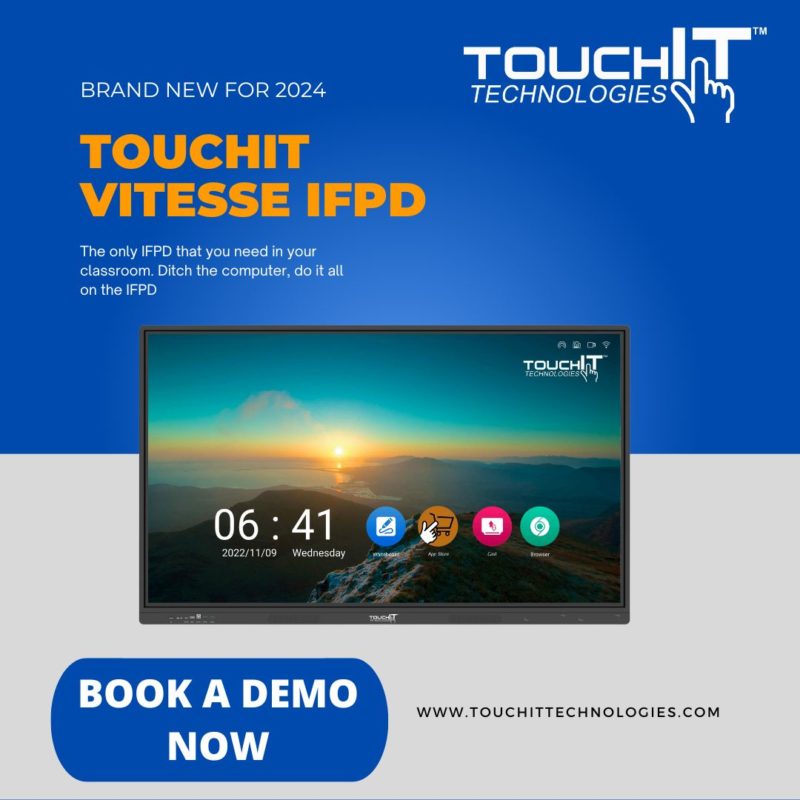The classroom used to be a place of echoing hallways and static whiteboards, often leaving students with diverse needs feeling isolated and excluded. Thankfully, the tide is turning! Enter the interactive flat panel (IFP): a beacon of inclusivity, bringing vibrant learning experiences to every student, regardless of their abilities.
Accessibility is not just an add-on feature for IFPs; it’s woven into their very fabric. Let’s dive into how these digital wonders are bridging the gap and ensuring all learners can participate in the interactive revolution:
1. Visionary Solutions: For students with visual impairments, IFPs go beyond the limitations of whiteboards. Built-in screen readers narrate text and menus, while text-to-speech software converts written content into audio on demand. Adjustable font sizes and high contrast themes further customize the display for individual needs. Imagine a student with low vision exploring virtual environments with audio descriptions, manipulating 3D models with tactile feedback, or participating in interactive lessons with magnified text – all thanks to the accessibility features of IFPs.
2. Hearing the Music of Learning: For students with hearing impairments, IFPs provide a vital bridge to information. Closed captioning and transcripts of videos and presentations ensure everyone can follow along. Amplification systems and Bluetooth connectivity for hearing aids enhance audio clarity. Imagine a student with hearing loss actively participating in discussions through text chat, engaging with visuals, and collaborating on projects with real-time captions – all without feeling like an outsider.
3. Beyond the Touch: Embracing Different Abilities: For students with motor difficulties, IFPs offer alternative means of interaction. Touch-sensitive screens can be controlled with eye-tracking technology or adaptive switches, allowing students with limited mobility to participate in activities. Voice control features enable students to navigate menus and manipulate content just by speaking. Imagine a student with limited hand movement working independently on assignments using voice commands, controlling presentations with eye trackers, or collaborating on projects through touchless interfaces – all thanks to the adaptability of IFPs.
4. Diverse Learning Styles, United by Technology: IFPs aren’t just for specific disabilities; they cater to diverse learning styles as well. Audio recordings and visual simulations support auditory and visual learners. Interactive activities and gamification elements engage kinesthetic learners. Real-time feedback and personalized learning pathways benefit students with learning disabilities. Imagine a student with dyslexia using voice recognition software to complete assignments, a student with ADHD participating in interactive games to reinforce concepts, and a student with autism accessing visual supports for complex topics – all with the help of IFPs tailored to their individual needs.
But the impact of IFPs on accessibility extends beyond these key features:
- Universal design principles ensure all content and interfaces are user-friendly for everyone, regardless of ability.
- Professional development and training for educators equip them with the knowledge and skills to use IFPs effectively with diverse learners.
- Collaboration with specialists ensures accessibility features are implemented accurately and meet the specific needs of students.
IFPs are not just technological marvels; they are catalysts for inclusive education. They break down barriers, empower diverse learners, and ensure every student has the opportunity to reach their full potential.
So, are you ready to build a classroom where everyone feels included and every mind can flourish? Join the movement for IFP accessibility!
Remember, true education thrives on inclusivity. Embrace the power of IFPs, and open the doors to a future where every learner can explore, create, and thrive in a vibrant tapestry of knowledge and possibility.


